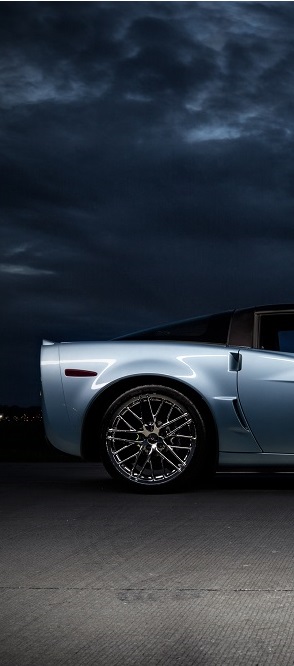

Jaguar XKE 1969 to 1974
Series II 1969 to 1971
The XKE Jaguar is still a British styled motor car but the exported versions have some changes from their domestic cousins. The Series II looks different with no glass covers on the head lamps, wrap around rear bumper, and the larger clearance/turn signal lights mounted below the bumpers. The dash board has rocker switches instead of the toggle style switch and they have lost the symmetry they had before the change. The bucket seats are more comfortable now as well you could have your car equipped with air conditioning and power steering if you liked. The engine rocker covers are not polished but have a ribbed design instead and the engine is somewhat detuned with larger valve clearances and the twin Stromberg s while the British counterparts retain tighter valve clearances and the original triple SU carburetors. The improvements to all the series II models are better cooling with a larger grill opening and the two cooling fans with the braking upgraded as well.
Series III 1971 to 1974
The “E Type” undergoes major changes with the new 5.3 Liter V12 engine complete with better brakes and power steering as basic equipment. The short wheel base roadster has disappeared with both the 2+2 coupe and convertible models on the longer wheel base. The Series III is easy to spot with the horizontal grill slates and flared arches on the wheels as well as the V12 badge prominently displayed on the rear. Again to conform to ne U.S regulations the export models are fitted with impact absorbing rubber bumper extensions with two in front and two on the rear bumpers. There were also a very small number of the original “XK6” six cylinder design available in the Series III cars.
The 5.3 liter V12 has an alloy block with removable cylinder liners and is actually two of the XK6 engines fitted together at a 60 degree angle to form a “V’. This was the second engine design sold in the entire history of the company. The design that was fitted into the series III E Type was a two intake/two exhaust valves per cylinder adaption of a 5 liter V8 four valve prototype the company used for racing but this engine deemed as noisy and unsuitable for a luxury motor car. The tested engine reaches peak power of 253 bhp (188 kW) at 6,000 rpm with a four speed manual transmission. A 1972 XKE Jaguar V12 has a top speed of 135 mph (217.2 km/h), will do the quarter mile in 14.82 seconds, and do 0-60 in 7.4 seconds.
There are two other XKE models built that are worth mentioning. One is a 1962 low drag coupe prototype that was meant to revive the spirit of the “D” driver racer the XKE takes many of its features from. This car is for racing and has the 3.8 liter engine with wide-angle cylinder heads, an aluminum shell; rear access welded shut, brake cooling ducts beside the windows, Perspex-not glass around the cockpit and void of interior trim. This one of a kind is in a private collection in the U.K.
The other is an aluminum shell and aluminum block version – a light weight E type made in ’63 and ’64 and is in many ways a variation on the low drag prototype. There were 12 units made with two extra body shells and the 12 are powered by the 3.8 liter race tuned engine putting out 300 bhp (224 kW). These cars are fitted with a Lucas fuel injection system and a ZF5 five speed transmission.
Republished by Blog Post Promoter
5 thoughts on “Jaguar XKE 1969 to 1974”
Comments are closed.








My buddy Mike has a 64. Frame off restoration. SWEET !!!!
Nice!
e-type
NiCe
Not a muscle car.